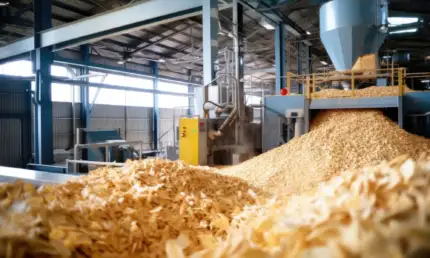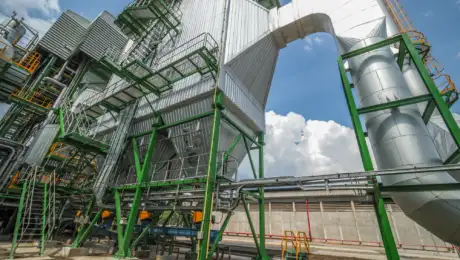
Identify the lowest temperature at which a large dust deposit may self-ignite
This test specifically assesses the self-ignition potential of dust deposits that may accumulate on surfaces, equipment, or within storage areas. The conditions under which self-ignition can occur become more critical as the volume of stored dust increases.
Self-heating, often caused by oxidation processes generating heat, becomes a significant concern in environments with high volumes of stored dust. The insulation properties of the dust can impede heat transfer to the environment. When the rate of heat generation surpasses heat loss, dust temperature rises until ignition.
Conducting SIT/AIT testing in high-volume dust storage environments is crucial for understanding and mitigating self-ignition risks. Test results inform preventive measures and safety protocols, minimising the potential for spontaneous ignition events in these settings.
Method
Gexcon performs this test based on EN 15188: 2020: “Determination of the spontaneous ignition behaviour of dust accumulations''.
Dust samples are filled into mesh wire baskets of different volumes and put into an oven. The temperature of the sample and the oven are monitored. Tests are performed for a number of oven temperatures (which is held constant) and sample volumes to determine the highest oven temperature at which no ignition occurs, as well as the lowest oven temperature at which the dust sample showed an ignition.
Analysis of the test results allows for deducing the results to larger volumes, predicting the self-ignition temperature for your dust in the volume it will be stored, as well as the time it takes to catch fire.
The test predicts bulk-stored dust's self-ignition potential, informing safe storage temperatures and time limits.
FAQs
-
1What is the purpose of SIT/AIT testing in the context of dust deposits?
SIT/AIT testing aims to determine the minimum temperature at which dust deposits can spontaneously ignite, providing critical insights into the self-ignition risks associated with stored combustible dust.
-
2Why is self-heating a concern in environments with high volumes of stored dust?
Self-heating, often due to oxidation processes in dust, poses a heightened risk in environments with significant dust volumes. The insulation properties of the dust can trap heat, leading to potential fire hazards.
-
3What factors influence the self-ignition temperature of dust deposits?
There are various factors that can influence the self-ignition temperature of dust deposits including dust type, particle size distribution, moisture content, and the presence of other combustible materials.
-
4How often should SIT/AIT tests be conducted in industrial environments with high dust volumes?
Testing frequency depends on factors such as changes in processes, equipment, or dust characteristics. Regular SIT/AIT testing is crucial to maintaining awareness of self-ignition risks and implementing necessary preventive measures in a timely manner.






